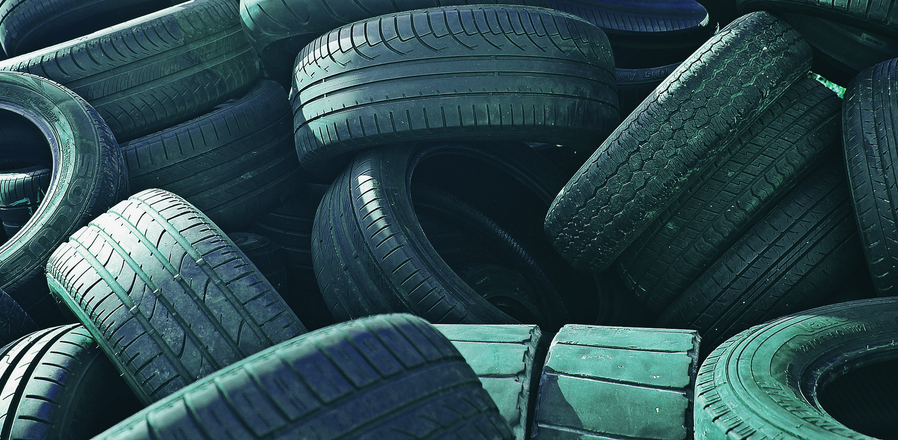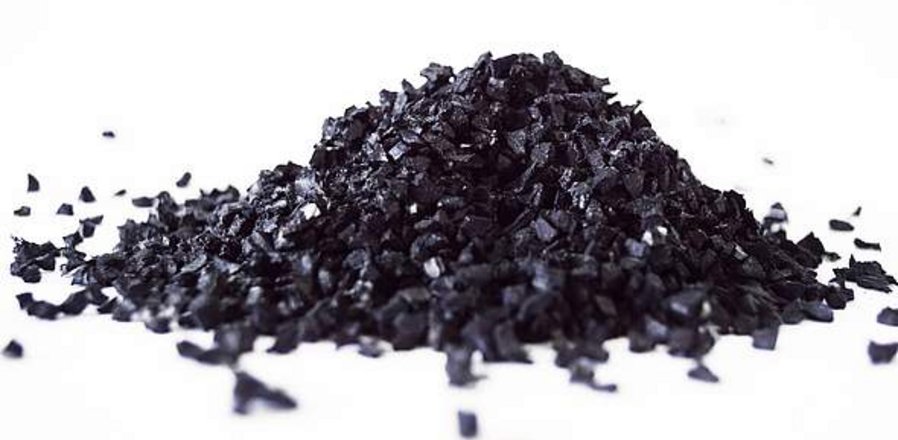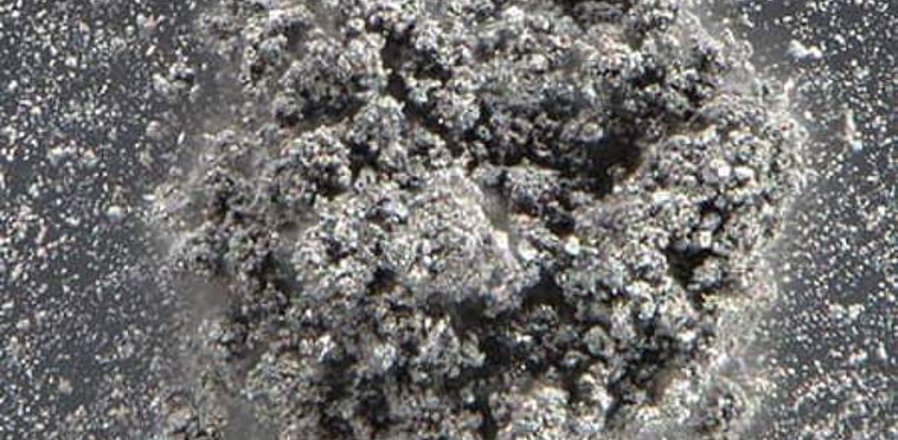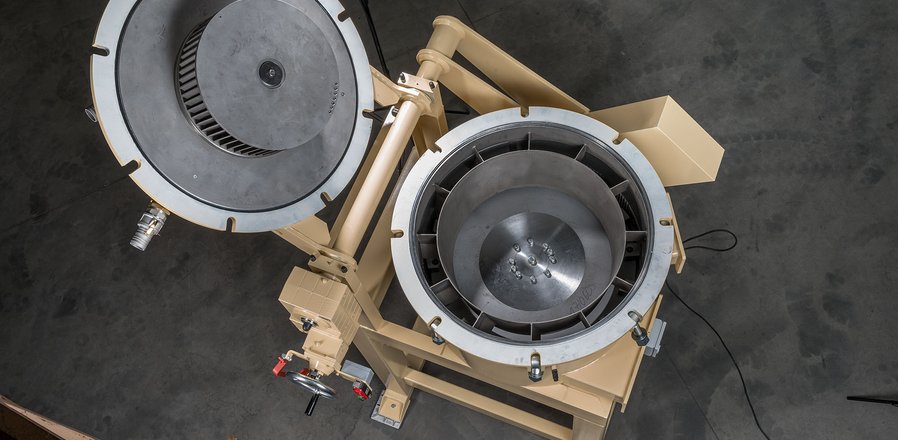
The global sustainability trend is making it increasingly clear that there is a rethink in society and politics. The need to drive and accelerate decarbonization initiatives at a global scale is recognized and applies pressure on all industrial sectors.
One of the sectors in focus is mobility and above all the automotive industry. Potentials for CO2 reductions can not only be used in the design, manufacturing, and fuel consumption of vehicles. Resources and emissions can also be saved with components supplied for automobile production.
The tire industry, for example, can have a major impact on decarbonization. The production of a new tire emits approx. 10kg of CO2, hence the strong efforts to develop new products and to accelerate the transition to a greener industry. In addition to the 1.8 billion end-of-life tires (ELTs) produced each year, there are still around 4 billion recyclable ELTs in so-called tire graveyards worldwide.
Reintroducing ELTs into the new tire production, decreasing the overall CO2 emissions, is therefore an important goal. At the same time, products developed from ELT materials must meet high application-specific performance requirements in practical use.

An elementary raw material for the rubber mixture in tire production is carbon black. Its production is a highly energy-intensive process: 1.8t of fossil fuels are required to produce one ton of carbon black in its pure form (so-called “virgin carbon black”, vCB), which emits two tons of CO2. In the tire, the final product, the material accounts for 30% of the total weight, which corresponds to approx. 3kg CO2 for a conventional vehicle tire:
Replacing parts of the vCB with recovered carbon black promises significant CO2 savings in the tire manufacturing process.
The efforts of the industry to develop processes to leverage this significant potential and then to bring them to industrial maturity are correspondingly large: Some tire manufacturers are already trying to achieve this with initial research projects and cooperations. Recycling companies are also building individual plants to improve processes, and specialized start-ups are beginning to scale up their plants for industrial use. In this context, both the EU and car manufacturers – BMW targets to provide 100% sustainable vehicles by 2040 to the market – are launching first sustainability initiatives.

Pyrolysis is a suitable method for recycling used tires. The ELTs from various vehicles, such as bicycles, motorcycles, cars, trucks, or off-the-road tires (OTRs) from e.g., mining vehicles, are brought into a cycle for reuse.
First, the ELTs are shredded into smaller pieces. Their main components steel, textile and rubber granules are separated from each other. Steel is then recycled in steel melting plants, textile fibers e.g., in sound-absorbing materials or in concrete mixes and the rubber granules are induced into pyrolysis systems.
Various pyrolysis systems and types are already in use worldwide, each of which has advantages and disadvantages as well as an impact on the intermediate products produced. To meet the increased demands on the pyrolysis oil (TPO) and the pyrolysis soot, new, more efficient processes had to be developed. Differences can be seen in the processing time of the feed material, the reactor design of the pyrolysis system, as well as in the energy carrier and temperatures applied. Additionally, a distinction can be made between batch and continuous operation and between single- and multi-stage systems. The output are the following intermediate products:
In addition to carbon, the raw-rCB that comes from the pyrolysis process also contains other components such as silica and sulfur in various forms. Before the raw-rCB can be used as a substitute for carbon black, it must be processed accordingly. The preparation consists of the following steps:

The coarse discharge from the pyrolysis system is stored in silos. The material is transported from these silos, which separate the systems from one another to the storage hopper of the grinding system. By milling the output from the pyrolysis system, the particle size is reduced, and unwanted by-products are separated which improves the material quality and properties. Optimization in this process step is driven by two main factors: the particle size distribution and the specific energy consumption in the grinding and classifying process and SSA (specific surface area).
The Impact Classifier Mill (ICX) grinding system from NEUMAN & ESSER addresses exactly this and combines high throughput and great flexibility with fine grinding and the lowest specific energy consumption, which is why it is particularly well suited for this process step. The wide range of possible sizes of the system adapts ideally to the size of the various pyrolysis processes. Specific plant design implementations enable for a discharge from several pyrolysis reactors into one grinding plant. When the material obtained in the grinding process meets the required quality criteria of the subsequent processing steps it gets stored in a silo, from where it is conveyed to a pelletizer plant in the following production step.

The ultrafine ground rCB is difficult to transport and to process in its present form due to its low bulk density and must therefore be pelletized. This important process step is a crucial part of the rCB overall solution developed by NEUMAN & ESSER: Pelletisation itself is a complex, independent process that includes five stations:
First, rCB and a binder must be dosed in a fixed ratio. This is the basis for a granulate that meets the customer's requirements for their final product. Selecting the right binder usually requires a series of demanding tests.
Subsequently, rCB and binder are mixed, whereby different mixing techniques can be used. In the continuous mixing process chosen for the proposed solution, the raw materials are formed to pellets in a pin mixer. In this context, it is of great importance that the final product has stable properties in terms of uniform size and hardness.
Various methods are also used in this process step. Basically, moisture is removed until the desired degree of dryness of the pellets. The most common type of dryer for this application is the fluid bed dryer. Hot air from a hot gas generator or, ideally, excess process heat is blown into the material. The dry and hot pellets are cooled in the last section of the fluid bed.
The oversize (and, if necessary, the undersize) is removed from the cooled pellets. The finished product is conveyed in big bags and/or silos. Oversize and undersize are returned to the grinding system, thereby closing the cycle.
The finished rCB-pellets can be packed directly into big bags. An alternative solution is silo storage, from which trucks or wagons can be filled directly. The necessary equipment is connected with various conveyor systems. Type and size are defined together with the customer and depend on the desired capacity and the transporting distance.
So far, jet mills have mostly been used in rCB production to achieve the desired fineness. Pin mixers are usually used to form the pellets, and drum dryers or fluid bed dryers are usually used for drying. In the past, these components were always made available to the customer as individual parts.
Now, with the rCB-specific ICX system, NEUMAN & ESSER is offering an integrated solution for grinding, sifting, and pelletizing – with considerable benefits. Due to the complete integration of the above components, the perfect orchestration of the sub-processes is available from a single source. The ICX impact classifier mill, which is already superior to other technologies in terms of energy efficiency and grinding results, is expanded by plant components and processes perfectly coordinated.
Accordingly, customers receive a full solution ranging from project development, through engineering to servicing the entire system provided by a team of NEUMAN & ESSER experts with extensive process technology know-how.
The in-house test center also offers the opportunity to carry out the necessary granulation tests under practical conditions. In these tests and with the support of process engineering experts, the assigned plant operator can vary the system parameters of the rCB treatment process and the choice of the suitable binder to determine the optimal rCB quality for the final material mixture.
At the end of the fine tuning of the individual system components and the optimization of the planned process parameters, a complete system is implemented that delivers a high-quality rCB. In accordance with the high demands of the tire industry, this ensures the best properties of the final product.
With the decision in favor of NEUMAN & ESSER, the decision is made for the best overall package - from consulting to engineering and testing to plant construction and subsequent service – leading to a final product with the highest performance.